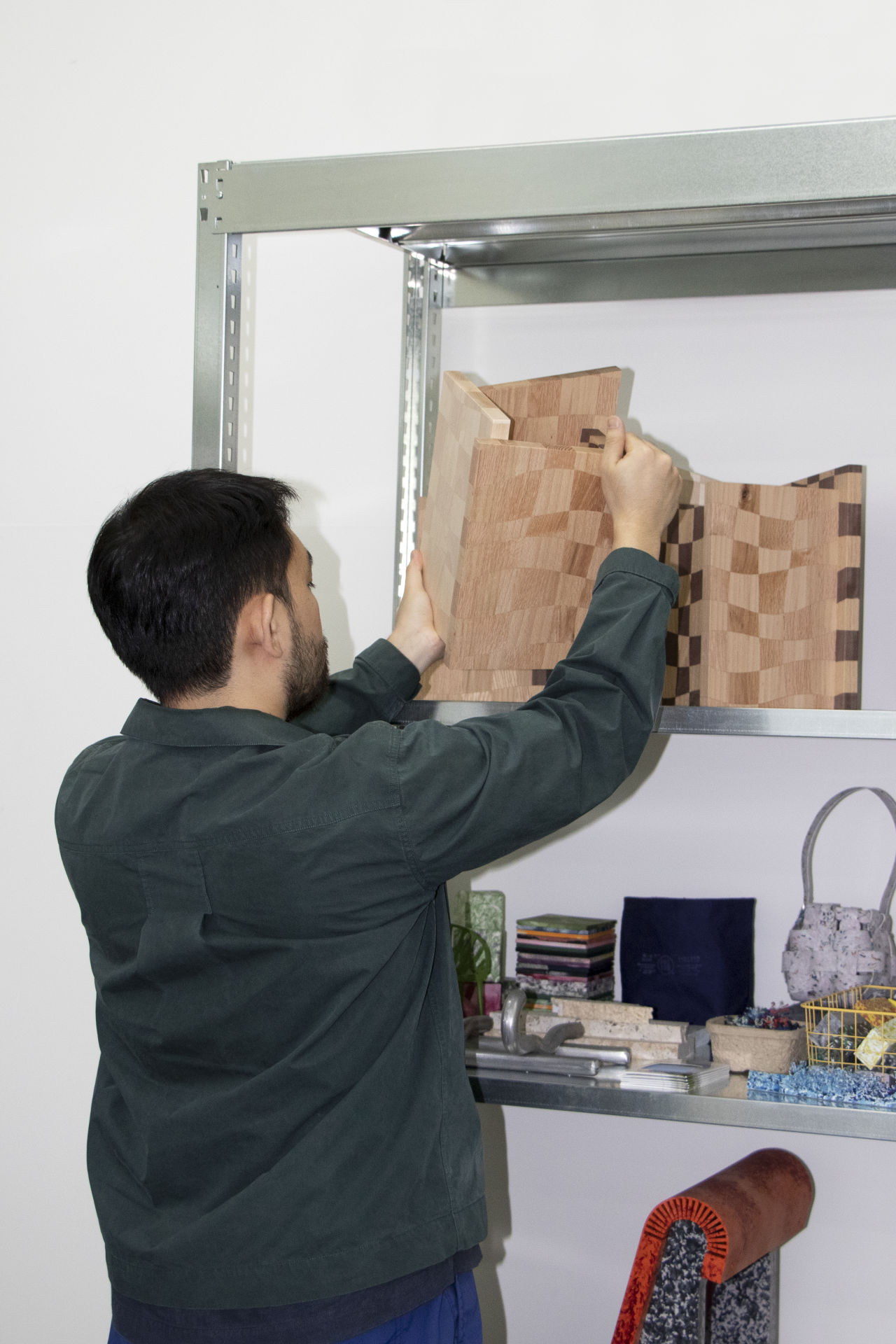Hem X Kuo Duo: Checkmate
The Mix Wood technique is a simple but effective transformation of waste wood into a vibrant signature material. Korean design studio Kuo Duo has made a limited edition of Mix Wood Vessels for Hem X in an elegant demonstration of classic carpentry reinvented. Curated by Modern Design Review, Mix Wood comes in a hand-signed limited edition of 5, made exclusively for Hem. As each piece is handmade, individual differences will occur, making it a unique and one-of-a-kind product.
Text by Laura Houseley


When Hwachan Lee and Yoomin Maeng of Kuo Duo explain their working practice, it’s like hearing a blueprint for a contemporary design studio described. Their concerns are with materials and processes. They are dedicated to functionality and reproducibility but weigh that against the desire for experimentation and investigation. Their projects are often self-initiated, and their target audience is wide. Yet Kuo Duo, in just a short amount of time, has established itself as a design studio with something extra.


Projects like Mix Wood exemplify the Kuo Duo way of working. The project is about materiality; it uses scrap wood and process; as it reimagines the traditional carpentry ‘end-grain’ technique. Kuo Duo has given this particular design methodology a name; 'Word Play’ and claims that it embodies “our process of exploring the possibilities of material combined with construction.” These combinations are limitless, say Kuo Duo, and make up the basis of their day-to-day studio practice. It is from this fundamental starting point that Kuo Duo’s distinct design typologies emerge.


So, with that in mind, it is easy to understand how the Mix Wood project evolved. “We found that when different woods are placed together, the grain and texture of each becomes more visible and distinguished. As a result of that observation, we used a traditional woodworking method called ‘end-grain technique,’ which intertwines different types of wood in a single board.” Mainly used to make patterned cutting boards, Kuo Duo set out to explore the possibilities this simple technique could offer by establishing a more efficient, contemporary process and applying it to various three-dimensional objects.


“Mix Wood Vessels were first made using offcuts from our furniture making. Therefore, the overall shape and pattern is improvised and irregular. We liked this raw and imaginative quality about the pieces.”
The Mix Wood method is labor intensive and diverges quite dramatically from the traditional end-grain process: “We use a bandsaw to cut two different types of wood into free curves. The curves follow the movement of the hand to create vibrant patterns. Moreover, since the two types of wood are cut by overlapping each other, we get a pair of matching boards from the parts. This means that symmetrical elements can be achieved, such as the legs of a chair.” This new raw material has an undeniable psychedelic quality, it is as decorative as it is inventive. So far, Kuo Duo has used it to create multiple gallery-oriented furniture objects including chairs, stools, and tables. For Hem X, they applied it to a specially conceived set of multi-use vessels. The objects are abstract in their designated use; “Mix Wood Vessels were first made using offcuts from our furniture making. Therefore, the overall shape and pattern was improvised and irregular. We liked this raw and imaginative quality and thought it would be nice with flowers. Having said that, there are no guidelines for the use of this vessel, and we would love to see it in various scenarios.”


Lee and Maeng established Kuo Duo after graduating. As a couple, they say it was a natural decision to work together; “Although we have many things in common in our lifestyles and interests, each of us has different strengths and perspectives, which enables us to collaborate in a complementary way.” Kuo Duo is currently focusing on the development of their edition furniture plus objects for mass production. They want to keep hold of the freedom to explore that has served them so well, whilst continuing to challenge themselves with new materials. All the while maintaining ‘the original design essence’ of their burgeoning studio.

